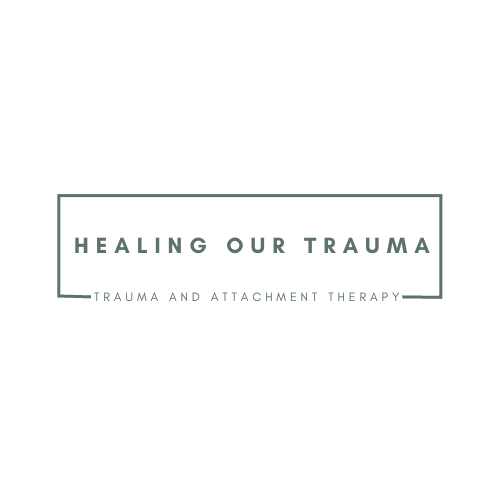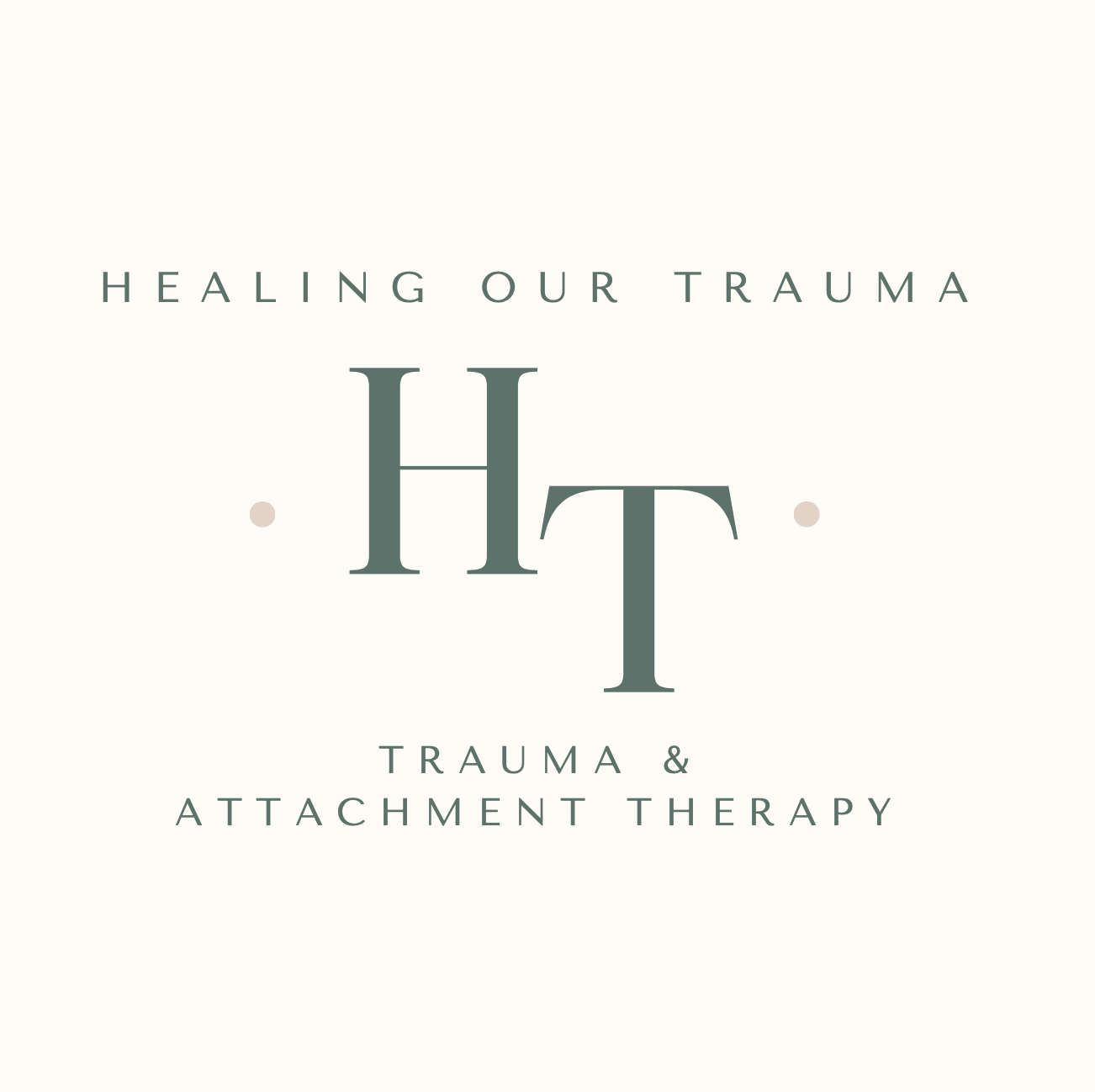Managing Post Traumatic Stress Disorder: Expert Insights
Understanding Post Traumatic Stress Disorder
Understanding Post Traumatic Stress Disorder
PTSD, commonly known as Post Traumatic Stress Disorder, is a mental health condition that affects individuals who have experienced a traumatic event. It can have a significant impact on a person's well-being, emotions, and overall quality of life. In this blog, we will dive deep into the world of PTSD, exploring its definition, the psychology behind it, common misconceptions, symptoms, its occurrence in different age groups, factors leading to its development, treatment options, prognosis, and the possibility of full recovery. By the end of this article, you will have a better understanding of what PTSD entails, its effects, and the ways in which it can be managed.
Defining Post Traumatic Stress Disorder
Post Traumatic Stress Disorder, or PTSD, is a mental and behavioral disorder that develops from experiencing a traumatic event, such as sexual assault, warfare, traffic collisions, child abuse, domestic violence, or other threats on a person's life or well-being. These events may include but are not limited to natural disasters, combat situations, sexual assault, physical abuse, or a life-threatening situation. PTSD affects an individual's mental health, disrupting their day-to-day life and causing a range of distressing symptoms. Understanding the definition of PTSD is the first step in comprehending the scope of its impact on individuals' mental well-being.
The Psychology Behind PTSD
Experiencing a traumatic event can have a profound psychological impact on a person. The intense stress caused by the event can overwhelm the brain's normal coping mechanisms, leading to the development of Post Traumatic Stress Disorder. The nature of traumatic stress and its effects on mental health make it a complex mental illness to understand and treat.
Post Traumatic Stress Disorder is a natural response to a dangerous event that falls outside the range of normal human experience. The stress caused by the traumatic event disrupts the brain's normal functioning, triggering a cascade of symptoms. These symptoms can manifest immediately after the event or may take months to appear. The psychological impact of PTSD can be long-lasting and challenging to overcome without proper support and treatment.
Common Misconceptions of PTSD
There are several misconceptions surrounding PTSD that can contribute to misunderstandings and stigmatization of individuals living with the condition. One of the most common misconceptions is that only combat veterans experience PTSD in the United States. While combat veterans are indeed a high-risk group, anyone who has experienced a traumatic event can develop the disorder.
Another misconception is that all traumatic situations lead to the development of PTSD. While many individuals may experience acute stress reactions immediately following a traumatic event, not everyone will go on to develop chronic Post Traumatic Stress Disorder. It is important to recognize the distinction between acute stress disorder, which may resolve within a month, and the longer-lasting symptoms associated with PTSD.
Some people believe that the symptoms of Post Traumatic Stress Disorder always manifest immediately after a traumatic event. While this can be the case for some individuals, the onset of symptoms can vary. Some individuals may experience delayed symptoms, with the effects of the traumatic event becoming evident months of the traumatic event or even years later. Understanding these common misconceptions is crucial in providing accurate information and support to those affected by Post Traumatic Stress Disorder.
The Symptoms of PTSD
Experiencing a traumatic event can have a lasting impact on a person's mental health, resulting in a wide range of symptoms associated with PTSD. These symptoms can be categorized into four main clusters: re-experiencing traumatic events, avoidance and numbing, hyperarousal, and negative thoughts and mood changes. It is important to note that the intensity and duration of these symptoms can vary from person to person. Let's delve deeper into each of these symptoms and understand the ways in which they can manifest in individuals with Post Traumatic Stress Disorder.
Re-experiencing Traumatic Events
One of the key symptoms of Post Traumatic Stress Disorder is re-experiencing traumatic events. This can occur in the form of distressing memories, intrusive thoughts, nightmares, or flashbacks. Individuals may feel as though they are reliving the traumatic event, even when they are in a safe environment. These re-experiencing symptoms can be triggered by various reminders, such as sights, sounds, smells, or even certain emotions.
In addition to the mental and emotional aspects of re-experiencing symptoms, individuals may also experience physical reactions. They may become tense, sweaty, or experience an increased heart rate when confronted with triggers related to the traumatic event. It is important to understand that re-experiencing symptoms can be distressing, disruptive, and contribute to a diminished quality of life for individuals with PTSD.
Avoidance and Numbing Symptoms
Avoidance symptoms are another hallmark of PTSD. Individuals may actively avoid people, places, conversations, or activities that remind them of the traumatic event. This avoidance can manifest in a variety of ways, including social withdrawal, isolating oneself, or even changes in daily routines.
Numbing symptoms, on the other hand, can involve feeling emotionally detached, a lack of interest in activities, or a sense of a limited future. This emotional numbing is a coping mechanism that the brain employs to protect the individual from further distress. However, it can also interfere with the person's ability to experience positive emotions, maintain healthy relationships, or engage in activities that once brought them joy.
- Individuals may actively avoid people, places, conversations, or activities that remind them of the traumatic event.
- Numbing symptoms can involve feeling emotionally detached, a lack of interest in activities, or a sense of a limited future.
Hyperarousal Symptoms
Hyperarousal symptoms of PTSD can manifest both mentally and physically. Individuals may experience a heightened state of alertness, feeling constantly on guard, and easily startled by the slightest trigger. This constant state of hyperarousal can be taxing, leading to sleep disturbances, difficulty concentrating, and irritability.
- Hyperarousal symptoms may include difficulty sleeping, irritability, and outbursts of anger.
- People with hyperarousal symptoms may be constantly on guard and easily startled.
Negative Thoughts and Mood Changes
Negative thoughts and mood changes are prevalent symptoms of PTSD. Individuals may experience a persistent negative worldview, negative thoughts about themselves, others, or the world in general. This negative cognitive pattern can affect their overall outlook on life, relationships, and future prospects.
Mood changes, such as persistent negative emotions, are also part of the symptoms. Individuals may experience a range of emotions, including anger, sadness, guilt, or shame. These mood swings can be overwhelming and contribute to the distress experienced by individuals with PTSD. Understanding the impact of negative thoughts and mood changes is crucial in helping individuals manage these symptoms and regain a sense of emotional balance.
PTSD in Different Age Groups
Post Traumatic Stress Disorder can affect individuals of all ages, from young children to older adults. In younger children, symptoms may manifest differently, often showing up in their play or drawings. For older children and adolescents, PTSD can lead to disruptive behaviors, difficulties at school, or withdrawal from activities they once enjoyed. In adults, PTSD might result in more conventional manifestations such as flashbacks, nightmares, or severe anxiety. It's important to recognize these age-specific signs and provide appropriate support and treatment for each group. The National Center for PTSD and the National Institute of Mental Health offer valuable resources for understanding PTSD across different age groups.
PTSD in Children and Teens
Younger children often manifest their traumatic stress symptoms through creative activities like play, drawings, or reenactment of the event that caused their distress. On the other hand, teenagers dealing with Post Traumatic Stress Disorder may display their struggles through risky behavior, substance use, and aggression. These are vital signs to be mindful of in identifying and addressing PTSD in children and teens, as early intervention is crucial for their mental health. Understanding these behavioral cues can lead to better support and improved mental health outcomes for young individuals dealing with posttraumatic stress disorder.
PTSD in Adults
Experiencing traumatic stress can have a profound impact on the daily life and mental health of adults. Symptoms like flashbacks, nightmares, and severe anxiety are common manifestations of posttraumatic stress disorder. It's important to note that many adults with PTSD also grapple with concurrent mental health issues such as depression or substance use disorders. Whether triggered by a single traumatic event or ongoing trauma, the diagnosis of Post Traumatic Stress Disorder necessitates symptoms persisting for at least a month, affecting the individual's overall well-being. This underscores the importance of seeking support from national mental health services administration and the available new ways of treatment.
Factors Leading to PTSD
Factors Leading to Post Traumatic Stress Disorder can vary widely, from experiencing a traumatic event like combat, natural disasters, or physical assault to witnessing a life-threatening event. Subsequent factors such as childhood trauma, a history of mental illness, and lack of a strong support system can also contribute. Furthermore, substance use and abuse can exacerbate the symptoms of posttraumatic stress disorder. According to the National Center for PTSD, other risk factors include a family history of anxiety or depression, recent stressful life changes, and coping strategies. Certain aspects of the traumatic event, such as its severity and duration, can also play a role in the development of PTSD. It is important to understand these factors in order to better support and treat those who may be struggling with the disorder.
Traumatic Events and Their Impact
Understanding the lasting effects of traumatic stress is crucial, especially for those who have experienced natural disasters or combat. Children witnessing traumatic events are particularly vulnerable to developing posttraumatic stress disorder. Coping strategies and continued exposure to trauma can influence the impact of such events on mental health. A thorough understanding of the traumatic event is essential for diagnosing PTSD, as it can result in a range of symptoms, from sleep disturbances to suicidal ideation. The National Institute of Mental Health offers new ways to address mental health problems, including PTSD, in individuals affected by traumatic experiences.
Genetic and Environmental Factors
Identifying risk factors, including genetic predisposition and family history, contributes to the development of PTSD. Moreover, environmental influences, such as social support, significantly impact the onset of PTSD. Recognizing these factors early on is crucial for intervention and treatment. Understanding the interplay between genetic and environmental factors is essential in addressing PTSD effectively. Vital support from family members and friends plays a significant role in the recovery from PTSD.
Treatment Options for PTSD
Treatment Options for Post Traumatic Stress Disorder:
One of the treatment options for post traumatic stress disorder involves eye movement desensitization and reprocessing (EMDR), a therapy recommended by the American Psychiatric Association. EMDR helps individuals process traumatic memories and reduce their distress. Another approach is exposure therapy, which gradually exposes individuals to their traumatic experiences in a safe manner, as part of exposure therapy, thus mitigating the impact of the trauma. Additionally, medication can be prescribed to manage symptoms of PTSD, particularly for those with co-occurring mental health problems such as panic disorder or substance use disorders. These treatment options are typically tailored to individual needs and may be used in combination for comprehensive care.
Psychotherapy and Its Effectiveness
Psychotherapy offers valuable support for individuals coping with traumatic stress, with cognitive processing therapy assisting in addressing negative thoughts related to the event. Moreover, cognitive behavioral therapy effectively manages symptoms and nurtures positive mental health. Talk therapy creates a secure environment for processing trauma and developing effective coping strategies. The efficacy of psychotherapy is reinforced by clinical trials and advancing scientific insights. Mental health professionals adeptly customize psychotherapy to meet the specific needs of those grappling with PTSD, offering hope and healing through evidence-based interventions and key components.
Medications Used in the Treatment of PTSD
Understanding the role of medications in the treatment of posttraumatic stress disorder (PTSD) is crucial for the overall treatment plan. Selective serotonin reuptake inhibitors are often prescribed as one of the main treatments to manage symptoms and can help alleviate anxiety, depression, and sleep problems associated with traumatic stress. Medications are an integral part of a comprehensive treatment plan that includes therapy and social support. It's important to note that drug administration for PTSD should be closely monitored by a health care provider to ensure effectiveness and minimize potential substance use disorders. This approach is in line with the guidelines provided by the National Center for PTSD and the National Institute of Mental Health.
The Prognosis of PTSD
Recovery from PTSD varies: some people might recover within 6 months, while others may experience symptoms for much longer. Factors influencing prognosis include the severity and duration of the traumatic event, as well as the individual's coping mechanisms. Older children and adults with strong social support tend to show better outcomes. Additionally, seeking mental health services is crucial for improved prognosis, often involving a combination of therapy and medication, including new ways like eye movement desensitization and reprocessing. Early intervention is key, as untreated PTSD can lead to substance use disorders or other mental health problems.
Living with PTSD
Living with post-traumatic stress disorder (PTSD) necessitates continual assistance from mental health services, loved ones, and friends. Effectively managing PTSD symptoms involves developing coping mechanisms and seeking professional help. Individuals living with Post Traumatic Stress Disorder may require ongoing mental health treatment, including therapy and medication. Understanding the impact of persistent trauma and exposure to dangerous events is crucial in comprehending the experience of living with PTSD. Seeking mental health services and social support is the most important thing for those coping with PTSD.
PTSD Recovery and Support Systems
Accessing mental health services and support systems is essential for recovering from traumatic stress. This is especially critical for combat veterans who may experience acute stress disorder or substance use disorders. Understanding the components of effective support systems is key for individuals in the recovery process. These systems, often part of exposure therapy or clinical trials, play a vital role in addressing PTSD symptoms and promoting overall mental well-being. Family members, friends, and organizations like the National Center for PTSD and the Substance Abuse and Mental Health Services Administration contribute significantly to the recovery and support of individuals with PTSD and substance abuse.
Is Full Recovery from PTSD Possible?
Full recovery from Post Traumatic Stress Disorder is achievable through proper treatment and support. Each person's journey is unique, but with effective strategies and social connections, individuals can live fulfilling lives after PTSD. Seeking professional help and finding a strong support system are crucial for the recovery process.
What causes post-traumatic stress disorder?
Post-traumatic stress disorder can be caused by a variety of traumatic events. These events often involve experiences that threaten one's safety or life, such as war, natural disasters, physical assault, or car accidents. After experiencing such an event, individuals may develop symptoms of PTSD, including recurring nightmares and flashbacks, intense fear or anxiety, difficulty sleeping, and avoiding reminders of the trauma. It is important to remember that everyone responds to trauma differently, and what may cause PTSD in one person may not have the same effect on another.
How does PTSD affect the brain and body?
PTSD has a profound impact on both the brain and the body. When a person experiences trauma, their brain's natural response to danger is triggered, leading to heightened arousal and a constant state of perceived threat. This can result in changes in brain structures and functions, such as the amygdala and prefrontal cortex, which play crucial roles in emotional regulation and memory processing.
Additionally, PTSD can affect the body's stress response system, leading to an overactive fight-or-flight response. This can cause physical symptoms like increased heart rate, sweating, and hypervigilance.
Understanding Post Traumatic Stress Disorder (PTSD) is crucial for recognizing and addressing its impact on individuals. It is a psychological disorder that can have a profound effect on a person's mental and emotional well-being. By debunking common misconceptions surrounding Post Traumatic Stress Disorder and familiarizing ourselves with its symptoms, we can create a supportive environment for those affected. Treatment options such as psychotherapy and medication provide hope for recovery, and support systems play a vital role in the healing process. While full recovery from PTSD may be challenging, with the right resources and support, individuals can learn to manage their symptoms and lead fulfilling lives. Let us strive to foster compassion and empathy for those living with PTSD, as it is through understanding and acceptance that we can make a positive difference.
Recent Posts
Similar Posts
At Healing Our Trauma we know that you want to be on a path to recovery and restoration. In order to do that, you need to address your underlying, unmet needs. The problem is most people don't know where to turn to or how to start which makes you feel frustrated and stuck. This leads some to want to quit. We believe in your resilience and the possibility of reclaiming a life marked by strength, growth, and renewed hope. We understand that overcoming trauma is a journey that requires personalized care, empathy, and a safe space for healing.
So, schedule a free evaluation. And in the meantime, sign-up for our Support Newsletter.
Together, we can navigate this journey toward healing, ensuring that you not only survive but thrive in the aftermath of trauma.
Contact Us
816-200-7909
Contact Us
We will get back to you as soon as possible
Please try again later
Insurance Accepted: Aetna (Missouri Only)
Forms of Payment: Cash, Check, Visa, Mastercard, Discover, American Express
Our address
Email: nadirah@healingtraumakc.com
Tel: 816-200-7909
12401 E 43rd St S, Independence, MO 64055, United States of America
Work Hours
- Mon - Fri
- -
- Sat - Sun
- Closed










